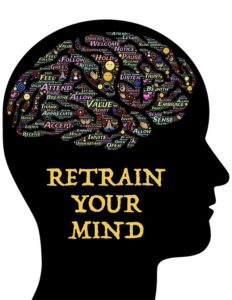
One of the hardest things about recovery from addiction is learning how to deal with stressful situations in a healthy way. Situations where you used to have a drink or a smoke to calm yourself down may seem overwhelming now that you are no longer using substances. These are the times when it is most important that we do the work of recovery: putting in the time and effort to learn new ways of taking care of ourselves.
Dialectical Behavioral Therapy
Dialectical Behavioral Therapy, or DBT, is a type of therapy that was developed by Marsha Linehan specifically to help people who have a hard time regulating emotions. Since its initial development, it has expanded to have uses in many different areas, including the treatment of addiction. An important aspect of DBT that is useful for people with addictions is its teaching of specific coping skills that can be used when you are feeling distressed or upset.
The idea behind DBT skills that are based in distraction techniques is that if you move the focus in your mind from the stressor to a different activity or sensation—particularly one that is soothing or pleasurable—your stress level will decrease. We have compiled three easy to learn distraction-based DBT skills to keep in your toolbox for hard times, so that you can empower yourself to handle situations without substances.

- Contribution
- Find a way to contribute to something or someone you care about in a way that makes you feel fulfilled. Try volunteering at an animal shelter, baking for a friend, visiting a retirement home, something small that you can do to make something better for somebody else. Not only does this give you an activity to do, it also provides a sense of purpose. Contributing to a cause greater than yourself helps to promote feelings of community and belonging.
- Opposite Emotion Activities
- Seek out an activity or a form of media that invokes the opposite emotion of the type of distress you are feeling. For example, the opposite emotion of anger would be calm, and the opposite emotion of sad would be happy. If you are feeling angry, try doing some yoga or breathing exercises. If you are feeling sad, watch a happy movie or make a playlist of joyful music to listen to. Engaging in an opposite emotion activity helps pull your emotions back to a manageable center.
- Sensations
- Sensation-based interventions work best when feelings of distress are running high. The idea is to provide an intense sensation that will jolt your brain out of the negative loop that it is in. Ways of doing this include splashing your face with cold water or taking a cold shower, going for a run or running up and down your stairs a few times, or going outside/finding a change of scenery. Giving your brain a tangible, intense thing to focus on that is not the thing that is upsetting you is one way to break out of a cycle of distress.

Resources:
Comtois, K. (2010). “DBT Distress Tolerance Skills: Helping the Clients through the Tough Times (and Yourself).” University of Washington. Retrieved from http://uwaims.org/webinars/slides/AIMS_MHIP_Distress_Tolerance_Skills.Slides_051310.pdf
Linehan, M. (2015). DBT skills training handouts and worksheets. New York: The Guilford Press.

Leave a Reply